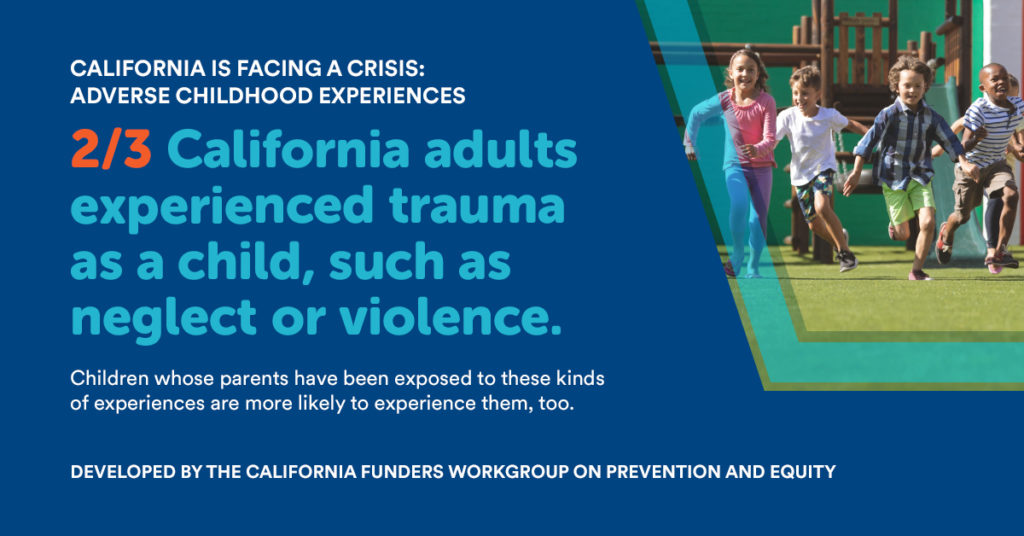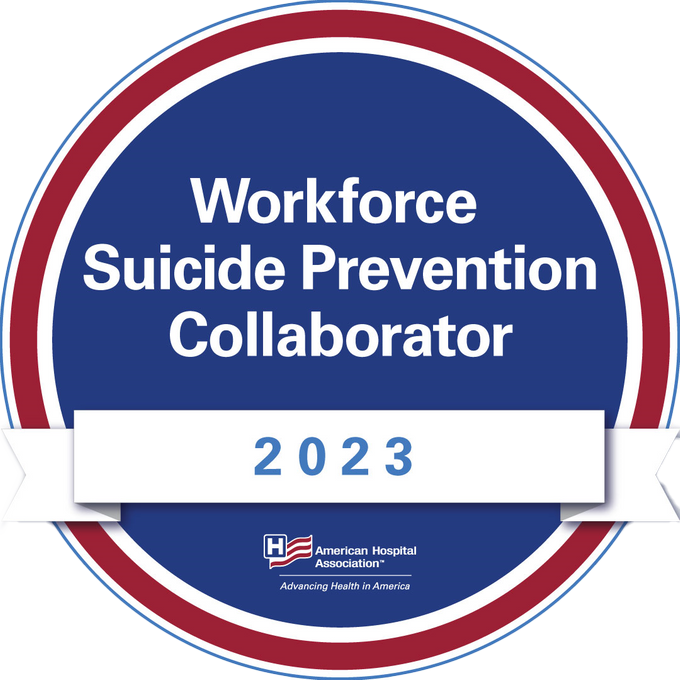Improving children’s physical and mental health by preventing adverse childhood experiences
California is leading the drive to end adverse childhood experiences (ACEs) across the state. In 2019, Governor Gavin Newsom and state Surgeon General Dr. Nadine Burke Harris set an ambitious goal to cut ACEs in half, and set aside funding to screen Medi-Cal recipients for ACEs and connect them to services.
While screening and providing healing services is critical, it is not enough. An even bolder goal would be to prevent ACEs from occurring in the first place. A new report from the Prevention Institute, Well Being Trust and other partners lays out steps to address what’s going on in communities that can increase the risk of childhood trauma.
Adverse childhood experiences have lasting impacts on health and well-being, including increased risk for chronic diseases, depression, and substance use. According to the California Department of Health, two-thirds of adults say they have experienced childhood trauma. Children who grow up in homes where parents have experienced childhood trauma are also more likely to experience them, as well.
In order to end these generational cycles of toxic stress and trauma, the California state government must invest in communities to address the root causes of ACEs: systemic racism, economic inequity, a hostile climate for immigrants, displacement, and unequal access to resources like parks and public transit.
These strategies outlined in the report can help build community well-being and, by extension, a healthy, safe and equitable California for all children:
- Strengthen economic supports to families.
Black and Latino children are five times more likely to live in high poverty neighborhoods than White children in California. Inequitable policies and disinvestment in communities of color have made it difficult for families to meet their children’s basic needs. On average, Black residents who grew up in low-income Oakland, CA die 14 years earlier than White residents from more affluent parts of the city.
One of the best ways to level the playing field for children at greater risk of ACEs is to ensure caregivers can afford to support their families. This includes establishing living wages for all Californians; addressing exploitation, wage theft, and unfair scheduling practices; strengthening California’s paid family leave program to support parent-child bonding; and investing more in adult education and training.
- Promote social norms that protect against violence and adversity.
Shared beliefs and expectations of how people should behave also have an enormous impact on health and well-being, for better or worse. When society normalizes behaviors such as dominance or aggression, this can increase the chances of children experiencing trauma and violence. On the flip side, normalizing behaviors like taking shared responsibility for children’s health and safety in a community can have a positive impact on everyone’s health.
Though norms and culture are developed collectively by all of us, there are ways that laws and policies can help create and support healthy norms, for example, by expanding access to school-based programs, one of the best ways to reach young people and promote healthy practices and behaviors.
- Increase access to housing and health-promoting community development.
California’s critical lack of affordable housing has forced many families to move into neighborhoods with unsafe living conditions. When families have access to safe, stable and affordable housing, they feel less financial stress, and that boosts mental health and well-being for adults and children alike.
Some steps the state can take include adopting zoning regulations that give developers incentives to build housing for all, funding family-friendly housing developments that include childcare and outdoor play areas and providing more funding to remove lead and environmental hazards.
- Ensure a strong start for children and youth in educational settings.
Every California child deserves a strong foundation for future learning. But children growing up in poverty often don’t have the educational advantages of their wealthier peers, which also impacts their health and well-being.
The state can improve educational conditions for youth by creating a coordinated system for early childhood care, developing strategies in partnership with local school districts to better support under-resourced schools, and normalizing the use of restorative justice in education settings to ensure young people remain in school with the resources they need to improve their well-being.
—
Community conditions — including employment rates, housing cost and quality, and the strength of educational options — influence children’s health and well-being now and in the future. And high rates of community trauma increase the prevalence of ACEs. Fostering strong social support systems helps to buffer families from toxic stress, and in turn, helps to prevent adverse childhood experiences. California has the means to establish new legacies of positive community health, and end the cycle of ACEs in the state.
Read the full report here.






